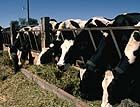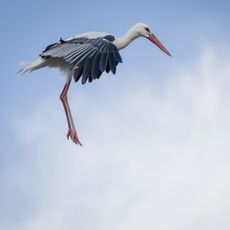New cattle diet cuts emissions
Cattle are being fed a new diet, which can cut methane emissions by 20%


Cattle are being fed a new diet in Britain to reduce their burping and cut methane emissions, as part of Dairy UK's campaign to boost the dairy industry's green credentials.
Methane from the dairy herd is estimated to contribute 1% of the UK's total greenhouse emissions but, following trials in Wales for this new diet, milk yields were boosted by up to four litres each day, with methane emissions reduced by 20%.
CO2 emissions could be lowered by 1.6million tonnes each year if every UK dairy farm adopted the new diet, which is a relatively small portion of chopped straw and hay, mixed with silage, wheat, maize, soya or sugar beet, to encourage the cows to eat it.
The cattle are being fed a new diet as part of Dairy UK's campaign to boost the dairy industry's green credentials.
To comment on this article, use the comment box below, or email us at clonews@ipcmedia.com. Read more about the countryside.
Sign up for the Country Life Newsletter
Exquisite houses, the beauty of Nature, and how to get the most from your life, straight to your inbox.
Country Life is unlike any other magazine: the only glossy weekly on the newsstand and the only magazine that has been guest-edited by HRH The King not once, but twice. It is a celebration of modern rural life and all its diverse joys and pleasures — that was first published in Queen Victoria's Diamond Jubilee year. Our eclectic mixture of witty and informative content — from the most up-to-date property news and commentary and a coveted glimpse inside some of the UK's best houses and gardens, to gardening, the arts and interior design, written by experts in their field — still cannot be found in print or online, anywhere else.
-
 A well-connected rural playground with 23 acres on the edge of the South Downs National Park
A well-connected rural playground with 23 acres on the edge of the South Downs National ParkOld House Farm is an impressive family home with a wealth of amenities that would inspire any rural passion.
By Arabella Youens Published
-
 The UK gets its first ‘European stork village’ — and it's in West Sussex
The UK gets its first ‘European stork village’ — and it's in West SussexAlthough the mortality rate among white storks can be up to 90%, the future looks rosy for breeding pairs in southern England.
By Rosie Paterson Published
